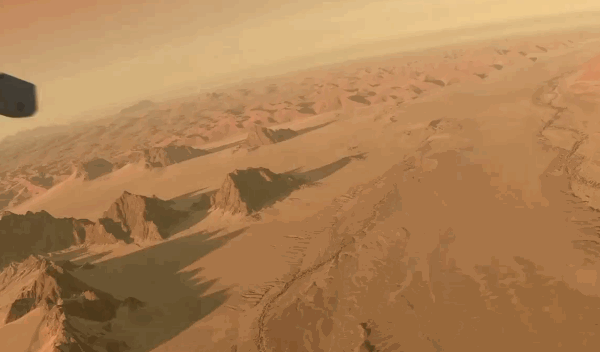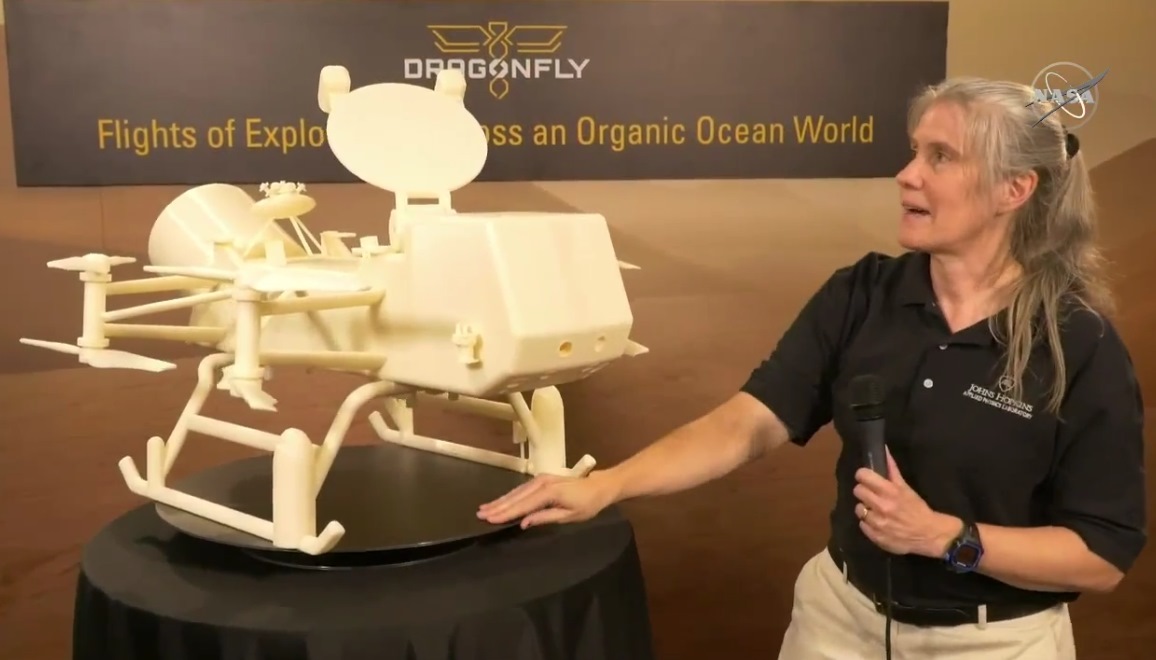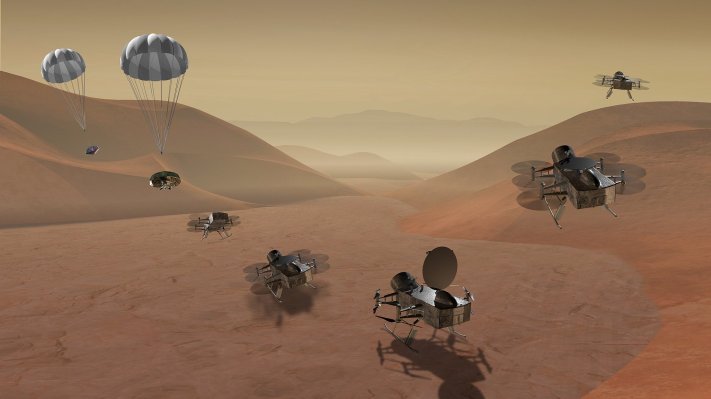NASA has just announced its next big interplanetary mission: Dragonfly, which will deliver a Mars Rover-sized flying vehicle to the surface of Titan, a moon of Saturn with tantalizing life-supporting qualities. The craft will fly from place to place, sampling the delicious organic surface materials and sending high-resolution pictures back to Earth.
Dragonfly will launch in 2026, taking eight years to reach Titan and land (if all goes well) in 2034. So there will be plenty more updates after this one!
The craft will parachute through Titan’s hazy atmosphere and land among its dune-filled equatorial region. It’s equipped with drills and probes to investigate the surface, and of course cameras to capture interesting features and the surrounding alien landscape, flying from place to place using a set of rotors like a drone’s.
We’ve observed Titan from above via the Cassini mission, and we’ve even touched down on its surface briefly with the Huygens probe — which for all we know is still sitting there. But this will be a much more in-depth look at this fascinating moon.
Titan is a weird place. With rivers, oceans, and abundant organic materials on the surface, it’s very like Earth in some ways — but you wouldn’t want to live there. The rivers are liquid methane, for one thing, and if you’re familiar with methane, you’ll know that means it’s really cold there.
 Nevertheless, Titan is still an interesting analogue to early Earth.
Nevertheless, Titan is still an interesting analogue to early Earth.
“We know that Titan has rich organic material, very complex organic material on the surface; there’s energy in the form of sunlight; and we know there’s been water on the surface in the past. These ingredients, that we know are necessary for the development life as we know it are sitting on the surface on Titan,” said principal investigator Elizabeth Turtle. “They’ve been doing chemistry experiments, basically, for hundreds of millions of years, and Dragonfly is designed to go pick up the results of those experiments.”
Don’t expect a flourishing race of methane-dwelling microbes, though. It’s more like going back in time to pre-life Earth to see what conditions may have resulted in the earliest complex self-replicating molecules: the origin of the origin of life, if you will.

Principal investigator Elizabeth Turtle shows off a 1/4 scale model of the Dragonfly craft.
To do so Dragonfly, true to its name, will be flitting around the surface to collect data from many different locations. It may seem that something the size of a couch may have trouble lifting off, but as Turtle explained, it’s actually a lot easier to fly around Titan than to roll. With a far thicker atmosphere (mostly nitrogen, like ours) and a fraction of Earth’s gravity, it’ll be more like traveling through water than air.
That explains why its rotors are so small — for something that big on Earth, you’d need huge powerful rotors working full time. But even one of these little rotors can shift the craft if necessary (though they’ll want all eight for lift and redundancy).
We’ll learn more soon, no doubt. This is just the opening salvo from NASA on what will surely be years of further highlights, explanations, and updates on Dragonfly’s creation and launch.
“It’s remarkable to think of this rotorcraft flying miles and miles across the organic sand dunes of Saturn’s largest moon, exploring the processes that shape this extraordinary environment,” said NASA associate administrator for science Thomas Zurbuchen. “Titan is unlike any other place in the solar system, and Dragonfly is like no other mission.”
